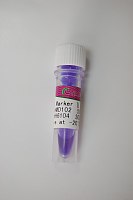Following acquisition of DNA damage S-phase progression may potentially be affected via multiple mechanisms. For example DNA damage-activated signal transduction pathways negatively regulate the initiation of DNA synthesis at unfired origins of replication, a process termed the ‘S-phase checkpoint’ or the ‘intra-S-phase checkpoint’. Additionally, many DNA lesions pose physical barriers to replication forks and therefore inhibit DNA synthesis directly by blocking the elongation of active replicons. Inhibition of DNA synthesis in response to DNA damage is commonly assayed by measuring incorporation of radiolabeled or halogenated nucleotides into bulk genomic DNA. However, these techniques do not distinguish between effects of DNA damage on initiation and elongation phases of DNA synthesis. The velocity sedimentation protocol described here allows investigators to determine the effects of DNA damage on initiation and elongation events. This technique involves labeling replicating DNA with 3 H-thymidine, then analyzing the size distribution of labeled ssDNAs based on their differential density sedimentation profiles after centrifugation through alkaline sucrose gradients. Determining the relative abundance and growth rates of small nascent ssDNAs provides an index of initiation and elongation events, respectively. Therefore, analysis of replication dynamics using velocity sedimentation provides a potentially valuable tool for assaying S-phase checkpoints as well as other aspects of DNA replication.






